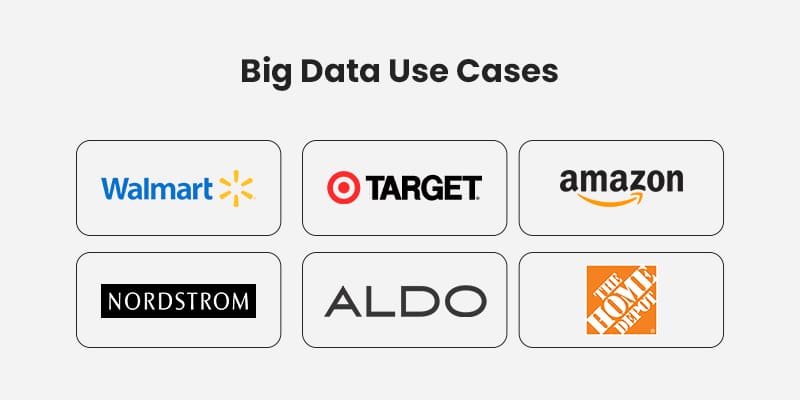
Big data signifies the massive amount of structured and unstructured data that organizations collect and analyze. The ability to harness and analyze this data has transformed how we live and work and is changing the world significantly.
One of the most considerable ways in which big data is transforming the world is through its impact on business. Companies are now able to use big data to get insights into customer behavior, market trends, and business operations, allowing them to make more informed decisions and operate more efficiently. This has led to the creation of new business frameworks, new products and services, and new ways of working.
Big Data is also steadily ushering in new developments within technology. The rise of machine learning (ML) and artificial intelligence (AI) has been made possible by the availability of massive amounts of data to train these systems. This led to the development of new technologies and applications that are changing the way we work and live, from virtual assistants like Siri and Alexa to self-driving cars.
Just think of a stream, and big data is already there, creating its place!
Now, even retailers across the world are rapidly implementing big data technology to increase value and make data-driven decisions. They are using the data they collect to enhance staff efficiency, product innovation, and also customer interactions.
Netflix is an example of a company implementing big data to target clients with personalized recommendations based on their viewing preferences.
Your business will always generate data; it doesn’t matter how small or big your business is. And this data could be about customers, employees, or even sales. Doesn’t matter which type of data you possess — it is always valuable when it comes to raising the caliber of your services.
Let’s start with some Definitions.
What is Retail Marketing Analytics?
In today’s competitive retail market, customers have an ocean of brands and retail channels to choose from. So, to remain ahead in the competition, retailers must enhance their marketing plans and comprehend the needs of their customers. But, how?
Retail marketing analytics comes in here.
Retail marketing analytics is the use of data analysis and modeling techniques to help retailers make informed decisions regarding their marketing strategies. Using retail marketing analytics, you can collect, process, and analyze data related to your consumer behavior, trace their purchasing patterns, product preferences, and other relevant metrics. By analyzing this data, you can gain valuable insights into their customers’ needs and preferences, as well as predict emerging trends, and assess the success of marketing initiatives.
Also, you can optimize pricing strategies, develop targeted promotions and advertising campaigns, and improve customer engagement and retention with retail marketing analytics.
Customer segmentation, predictive modeling, cohort analysis, and A/B testing are a few examples of retail marketing analytics strategies.
Read More: Discover how retail customer segmentation can transform your business with personalized strategies and enhanced customer experiences.
What is Big Data?
Who wouldn’t want to see their sales go up and increase customer satisfaction?
3.8 million searches are made on Google every minute. And 188 million emails are sent every minute.
What does this even mean?
Just a few years ago, it was next to impossible to gather, segment, and analyze this large amount of data. It was beyond the capabilities of any computer.
Thanks to Big Data, things are becoming possible now!
Big Data is a field of study that focuses on the gathering, storing, processing, aggregation, and analysis of very large volumes of structured and unstructured data to identify trends, connections, and patterns that can be utilized to improve the performance of the analyzed unit.
The sources of big data include social media platforms, mobile devices, sensors, machines, and other digital devices that generate vast amounts of data every day. Today, Big data is used in a variety of industries, including healthcare, finance, manufacturing, and retail, among others.
The three main characteristics of big data are:
- Volume: Big data refers to generating large volumes of data.
- Velocity: The data is generated at high velocity and needs to be processed quickly to extract insights.
- Variety: Big data can come in different formats, including structured, semi-structured, and unstructured data.
Big data is an important concept in the world of data analytics and is transforming the way organizations collect, store and analyze data to make informed decisions.
If you, too, want to bring some change to how your business works and consequently increase sales, our retail software development services can help you with the same. Feel free to reach out to us anytime!
Significance of Big Data Analytics in the Retail Industry
Retailers no longer attempt to guess what you might like to purchase. User behavior is being examined to determine what they desire by leveraging algorithms and predictive analytics to better understand their customers. By doing this, companies provide a distinctive shopping experience that stands out from the competition and entices customers to return time and time again.
Large data sets are analyzed using big data analytics to discover patterns and trends. Big data analytics help retailers better understand their customers’ needs, wants, and behaviors. It aids in better product choice, pricing, and marketing decisions.
The retail sector is already being transformed by big data analytics helping retailers like you to make better decisions that will increase profits and provide you with a competitive advantage.
Businesses must be competent at foreseeing the future and responding quickly to survive and grow in this fast-changing world.
If you, too, want your retail business to lead through the race and get the best out of what’s to be invested, going for enterprise solutions is the best solution!
Maximize Your Productivity and ROI of Your Retail Business with Matellio!
Traditional data is structured data that is primarily kept up to date by all sizes of businesses, from little startups to enormous giants. A centralized database architecture is used in a typical database system to store and preserve the data in a set format or fields in a file. Structured Query Language (SQL) manages and accesses this data.
While, if we talk about Big Data; it is an upper version of traditional data. Big data deals with too large or complex data sets, which are difficult to manage in traditional data-processing application software. It works with a sizable amount of structured, semi-structured, and unstructured data. It includes the five V’s – volume, velocity, variety, veracity, and value. Big data describes both enormous amounts of data as well as the process of analyzing these massive amounts of complicated data sets to extract relevant facts.
Here’s a tabular comparison of how big data in retail differs from traditional retail analytics:
| Feature | Traditional Data | Big Data |
| Data Volume | Typically deals with small to medium-sized datasets | Handles large, complex and unstructured datasets from multiple sources |
| Data Variety | Primarily deals with structured data | Manages data that is organized, semi-structured, and unstructured from a range of sources, including social media, sensors, mobile devices, and online interactions. |
| Data Velocity | Typically analyzes static historical data | Analyzes real-time and near real-time data streams |
| Analytics Methods | Primarily uses basic statistical methods such as descriptive statistics, correlation, and regression analysis | Uses advanced analytics techniques such as machine learning, natural language processing, and predictive modeling |
| Insights | Focuses on insights based on past trends | Provides real-time insights and predictive insights for better decision making |
| Applications | Used for traditional reporting and dashboards | Used for developing personalized marketing, predictive analytics, and supply chain optimization |
| Infrastructure | Uses traditional relational databases and data warehousing solutions | Uses distributed file systems, NoSQL databases, and cloud computing solutions |
| Cost | Traditional retail analytics solutions are often less expensive | Big data solutions can be more expensive to implement and maintain |
| Benefits | Provides historical insights and performance analysis | Provides real-time insights and helps identify new revenue streams, improve customer experience and optimize operations |
While traditional retail analytics focuses on historical data and descriptive statistics, big data in retail leverages real-time and advanced analytics techniques to provide insights that can drive innovation, improve customer experience and increase operational efficiencies.
How Big Data is Revolutionizing the Retail Sector

Big data analytics is becoming a cutting-edge technology that helps businesses expand based on objective data rather than subjective expertise with the digital era and cloud computing taking hold.
It is being used by retail industries to obtain insights and improve operational efficiencies. Let’s have an overview of some of the examples of how big data is being used in retail:
Big Data-Driven Fraud Detection and Prevention
Big data is the ideal tool for detecting and preventing fraud, whether it’s credit card fraud, return fraud, identity fraud committed by a customer, or internal violations or fraudulent behavior committed by firm employees.
Based on numerous data points, including a customer’s weblog, current GEO location, purchase history, and even a social network feed, real-time fraud detection can assist a store in blocking a possibly fraudulent transaction during a purchase in a physical store.
360 Degree Client View
A 360-degree client view is crucial in certain areas of business, such as customer care and marketing, where big data can help provide useful outcomes.
The only way for a business to succeed is to have a thorough awareness of the client’s demands and motivations whenever hard data needs to be supplemented with soft data (such as social media mentions and attitudes).
For instance, using big data enables you to be informed when a customer’s behavior indicates a decline in interest or flagrant unhappiness with a certain product.
Enhancing Customer Experience
Implement big data through leading custom enterprise software development companies like us and transform your retail industry through insights that can drive innovation, improve customer experiences, and increase operational efficiencies.
Utilizing data analytics makes it simpler to complete operations like selecting a product and updating account information like the shipping address or payment method.
Through convenience features, many businesses nowadays make things simple for their customers. Every platform they offer access to has it, including online order processing, where you can choose from the available options before making a purchase.
Additionally, you can purchase without providing any additional personal information. Customers can check out quickly by entering some of your personal information (such as your order ID, if applicable).
During busy workdays, this procedure eliminates the need to enter fresh data many times and allocate it to different locations.
Retain Customers
Keeping customers is a difficult task. It necessitates ongoing effort and concentrates on what will maintain their interest in your brand. It entails thinking about how you can meet their wants or interests over the long run. Instead of someone who spends time elsewhere conducting business (sleepless nights), they become devoted customers of yours.
By seeing patterns, data analysis enables the identification of disengaged individuals. This includes a pattern of frequent shopping. These insights help merchants introduce promotions that can entice customers to make additional purchases while keeping those who have already made them.
Optimizes The Price
The price of a product gradually declines once demand dies down. It gets more effective if you don’t lower your costs throughout off-season intervals or durations.
Retailers can monitor consumer purchasing habits and preferences using big data analytics to determine what prices will be most enticing to their customers.
To ensure that products are not overstocked or understocked, businesses can also utilize big data analytics to monitor inventory levels and sales rates.
You can use Big Data development services in the approaching years if you wish to benefit from this expanding trend. It is acceptable to adopt it as quickly as possible to achieve a competitive edge.
Predicts Demand and Managing Inventory
Retail businesses can comprehend their clients’ purchasing needs and concentrate on markets with high demand thanks to data analytics and big data development. Many merchants have benefited from the conclusion drawn from the data. To stay ahead in this competitive sector, they methodically plan out the inventory levels as they gain a deeper understanding of what their target audience wants.
The back-office hierarchy of departments that can be optimized using big data includes workforce management, logistics, price book management, inventory control, and loyalty program administration.
Improved Level of Personalization
With the help of big data solutions, it is now possible to comprehend the precise preferences of the consumer. Increased consumer customization results in a dramatic rise in return on investment. Since consumers are drawn to deals and discounts, sharing their information is not a problem for them. Based on business intelligence, the consumer can receive the offers that are most appropriate for them.
Also Read: Discover how the Future of Inventory Management is evolving with custom solutions, enabling businesses to optimize operations, reduce costs, and enhance supply chain efficiency.
Several Big Data use cases in the Retail Industry

Now that we are aware of how vital big data is for maintaining a competitive edge in retail, it is crucial to comprehend how to use this knowledge practically. The following well-known retailers employ big data platforms to make choices that increase consumer happiness and promote sales.
- Walmart used big data retail analytics software to monitor inventory levels and anticipate client demand. By doing so, they were able to lessen their stock shortage by 20%. Not every large global retailer can afford a processing facility with the opulence of Data Café by Wal-Mart.
- Target uses big data analytics to personalize its marketing campaigns. Customers receive tailored coupons and advertisements based on their past purchases. In a recently opened store in Perth Amboy, New Jersey, Target used a big data-driven replenishment system, showing an amazing 40% improvement in the management of out-of-stock items.
- Amazon– the king of the e-commerce jungle, employs big data analytics to enhance their search results and propose products to customers. The art of pricing optimization has been honed and streamlined to ten minutes by Amazon-the average time it takes for a product’s price on Amazon to change. The amount of data may seem inconceivable, with 200 million users and 1.5 billion products available for purchase. However, it’s easily absorbed by Amazon servers because of the eye-popping 25% increase in earnings the corporation saw because of this pricing feature.
- Nordstrom is using big data to enhance the shopping experience for customers. They keep track of consumer movements around the store and utilize this data to alter the layout and placement of the products.
- Aldo uses big data to live on with those Black Friday days. Without a doubt, the busiest and most exciting days of the year for retailers are Black Friday and Cyber Monday. In fact, as per the National Retail Federation (NRF), up to 30% of annual retail sales are attributable to sales in November and December.
The Canadian shoe and accessories manufacturer- Aldo uses big analytics to deal with this hectic time of year. The business integrates various data sources used in payment, billing, and fraud detection through the use of a service-oriented big data architecture. Even on Black Friday, Aldo can give a flawless online shopping experience thanks to this integration effort.
According to Dave Abbott, the vice president of integrated media and marketing at Home Depot, the company uses big data to guarantee item availability, whether it’s a swimsuit for a tropical region or a snow shovel for places with colder climates.
As you can see, the retail sector is already greatly impacted by big data analytics. It will only become more significant in the future. Retailers who use big data analytics can better understand their customers and satisfy their needs. In the fiercely competitive world of retail, this will be essential for survival. If you also want such digital transformation services for your retail business, Matellio can help you with that.
Also Read- Top Data Analytics Business Ideas of 2023
Conclusion
Big data analytics is revolutionizing the way the retail sector works. Retailers are learning a lot about the preferences and behavior of their customers by utilizing the power of data enabling them to decide on inventory, pricing, and promotions, further leading to more sales.
No doubt, this technology is here to stay!
If you, too, are looking for future growth in your retail business through big data analytics, get in touch with us right away. With your individual demands and goals in mind, we’ll be pleased to tailor the ideal solution for you.
Watch out for additional in-depth articles on retail analytics software development on the Matellio blogs.




